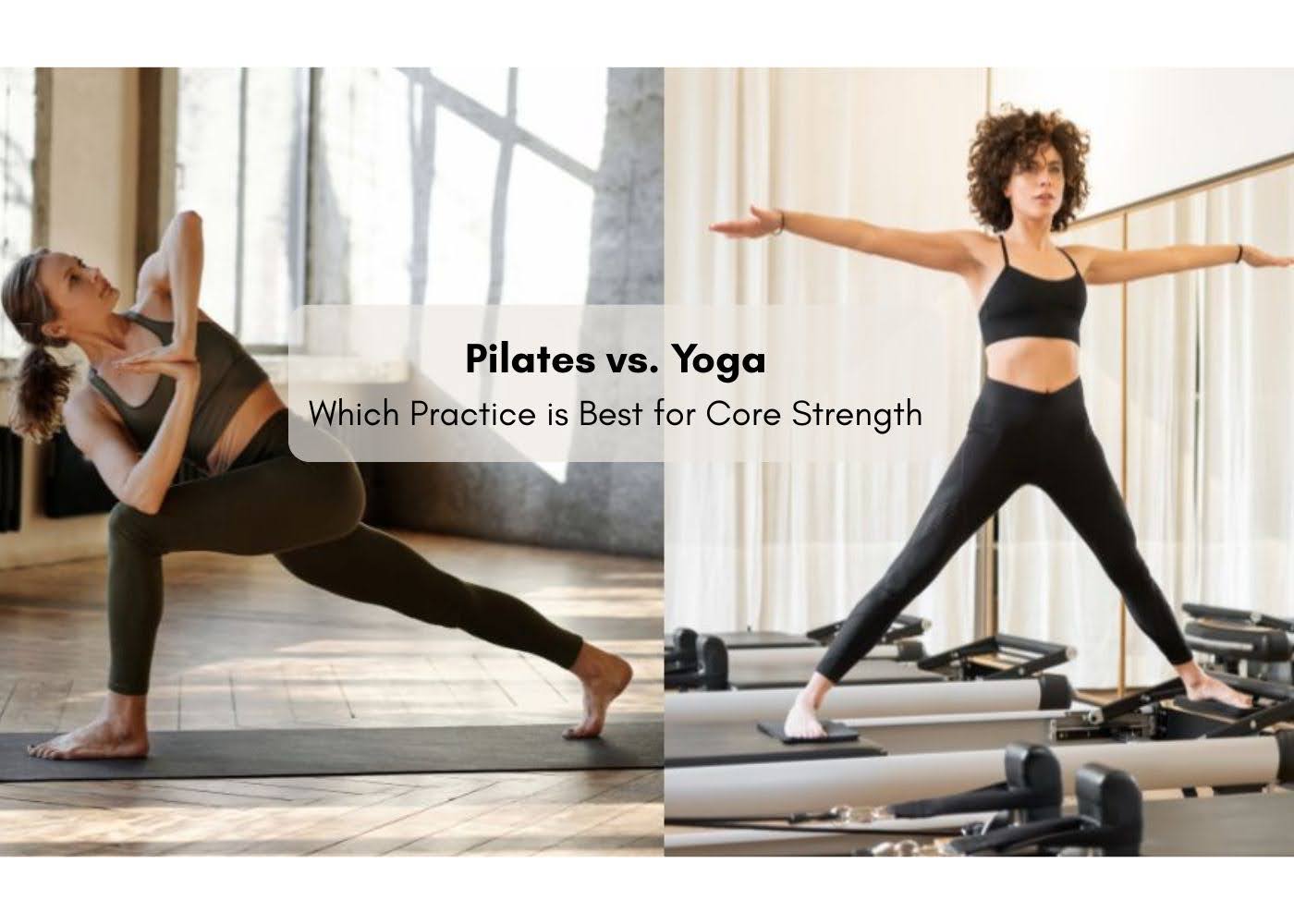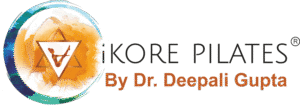
If you’ve been scrolling through fitness feeds lately, you’ve probably noticed everyone talking about Pilates and yoga. Both seem great for getting fit, but when it comes to building serious core strength, which one actually delivers? Let’s break it down.
Understanding the Core Basics
Your core isn’t just about getting visible abs (though that’s a nice bonus). It’s the powerhouse of your body—your abdomen, lower back, hips, and pelvis working together to keep you stable, balanced, and moving efficiently. A strong core means better posture, fewer backaches, and more confidence in everything you do, from carrying groceries to nailing that dance move at weddings.
Both Pilates and yoga work your core, but they take different approaches. Think of it like choosing between cycling and running; both are cardio, but they feel completely different and target your body in unique ways.
What Makes Pilates Special?
Pilates was created specifically to build strength and stability from the inside out. Every movement is designed to activate those deep core muscles that often get neglected in regular workouts.
When you practice core Pilates, you’re doing controlled, precise movements that wake up muscles you didn’t even know existed. Whether you’re on a mat or using a reformer machine, every exercise challenges your core to stabilize your body while you move. That burning sensation? That’s your powerhouse muscles getting stronger.
A Pilates workout typically includes moves like the hundred, roll-ups, and leg circles. These aren’t random exercises; each one is carefully crafted to strengthen your core while improving your overall body awareness and control.
Read About: Unlock the Benefits of Pilates Workshops for Full Wellness
Why Pilates Works for Core Strength
Pilates focuses on quality over quantity. Instead of doing endless crunches, you’re performing fewer movements with complete concentration and control. This approach activates deeper muscle layers that traditional ab exercises often miss.
The breathing technique in Pilates also plays a huge role. You’re not just holding your breath and pushing through. You’re coordinating breath with movement, which engages your transverse abdominis, the deep muscle that acts like a natural corset around your midsection.
Pilates for Weight Loss
While Pilates excels at building core strength, many people wonder about Pilates for weight loss. Here’s the real talk: Pilates alone might not burn as many calories as a high-intensity workout, but it creates lean, toned muscles that boost your metabolism. Plus, a strong core improves your performance in other exercises, making your overall fitness routine more effective.
The body awareness you develop through Pilates often leads to better lifestyle choices, too. When you’re more connected to your body, you naturally become more mindful about movement and nutrition.
Read About: Best Pilates Workout for Weight Loss
The Yoga Approach to Core Strength
Yoga takes a more holistic path. While it definitely engages your core, its primary goals are flexibility, balance, and the connection between mind and body. That doesn’t mean your core gets ignored, far from it.
Poses like plank, boat pose, and various balancing postures require serious core engagement. But in yoga, core work is part of a bigger picture that includes stretching, breathing practices, and meditation.
What Yoga Brings to the Table
Yoga shines when it comes to functional core strength. You’re not just doing isolated movements; you’re holding positions that require your entire core to work together with the rest of your body. This builds endurance and stability in a different way than Pilates.
The mindfulness aspect of yoga also helps you tune into your body. You start noticing where you’re tight, where you’re compensating, and how to engage your core more effectively in everyday activities.
The Key Differences Between Pilates and Yoga
Find below the key differences between Pilates and Yoga:
| Aspect | Pilates | Yoga |
| Primary Focus | Core strength and stability | Flexibility, balance, and mindfulness |
| Movement Style | Controlled, repetitive movements | Static poses and flowing sequences |
| Core Engagement | Constant, targeted activation | Integrated with full-body poses |
| Equipment | Often uses a reformer or a mat | Primarily mat-based |
| Best For | Direct core strengthening and posture | Stress relief and overall body awareness |
At The Pilates Studio: Your Core Strength Journey
At The Pilates Studio, the focus is on helping you build real, functional core strength that translates into everyday life. The approach here combines the principles of core Pilates with personalized attention to ensure you’re getting the most out of every session.
What Makes The Pilates Studio Different
The studio offers both mat and reformer classes, giving you variety while maintaining that crucial focus on core activation. The instructors understand that everyone comes in at different fitness levels, so they provide modifications and progressions to meet you where you are.
A typical Pilates workout at the studio emphasizes proper form and breath control. You won’t be rushing through movements. Instead, you’ll learn to engage your powerhouse muscles with precision, building strength that lasts.
Making Your Choice
Choose Pilates if you want to:
- Build targeted core strength quickly
- Improve posture and reduce back pain
- Develop muscle tone and definition
- Work with specific equipment like reformers
- Focus primarily on physical strength and stability
Choose Yoga if you’re looking for:
- A holistic practice combining physical and mental benefits
- Increased flexibility alongside some core work
- Stress reduction and mindfulness
- A spiritual or meditative component
- Community-focused group classes
Consider combining both if you:
- Want the most well-rounded fitness approach
- Enjoy variety in your workout routine
- Need both flexibility and strength
- Appreciate the mental benefits of yoga and the physical focus of Pilates
- Have specific fitness goals that benefit from both practices
The Combination Approach
Here’s something most people don’t realize: Pilates and yoga actually complement each other beautifully. The core strength you build in Pilates makes your yoga practice more stable and controlled. Meanwhile, the flexibility you gain from yoga helps you move through Pilates exercises with a better range of motion.
Many fitness enthusiasts find that doing Pilates twice a week and yoga once or twice creates the perfect balance. The Pilates sessions build that core foundation, while yoga sessions work on flexibility and stress management.
Practical Tips for Getting Started
If you’re leaning toward Pilates for core strength, start with two to three sessions per week. Consistency matters more than intensity when you’re beginning. Give your body time to learn the movement patterns and build those neural connections to your core muscles.
Don’t expect instant results, but do expect to feel different quickly. Many people notice improved posture within a few weeks. The visible changes to muscle tone typically show up after a couple of months of regular practice.
For a Pilates workout to be effective, you need proper guidance, especially at the start. Poor form not only reduces results but can also lead to injury. That’s where a studio like The Pilates Studio becomes valuable, you get expert eyes on your technique.
Beyond the Core
While we’ve focused on core strength, both Pilates and yoga offer benefits that extend far beyond your midsection. Pilates improves overall body alignment, reduces injury risk, and enhances performance in other activities. Yoga reduces stress, improves sleep quality, and creates a sense of overall well-being.
The practice you choose depends on what you need most right now. But remember, fitness isn’t about perfection; it’s about showing up consistently and doing what feels right for your body.
Frequently Asked Questions
Q1. Can Pilates really help with weight loss?
While Pilates builds lean muscle and improves metabolism, it works best for weight loss when combined with cardio and healthy eating. The toned, defined muscles you develop can make you look slimmer even if the scale doesn’t change dramatically.
Q2. How quickly will I see results from Pilates?
Most people notice improved posture and body awareness within two to three weeks. Visible muscle tone typically develops after eight to twelve weeks of consistent practice, usually two to three times per week.
Q3. Is yoga enough for core strength, or do I need Pilates too?
Yoga provides functional core strength and stability, but Pilates offers more targeted, intensive core work. If your primary goal is maximum core strength, Pilates is more direct, though yoga certainly contributes to core fitness.
Q4. What equipment do I need to start Pilates at home?
You can begin with just a mat for mat Pilates. As you progress, you might want to add a resistance band, small ball, or magic circle. Studios like The Pilates Studio provide reformers and other equipment for more advanced work.
Q5. Can beginners join Pilates classes, or do I need to be flexible first?
Pilates is excellent for beginners and actually helps build flexibility. The Pilates Studio offers classes designed for different levels, with instructors who provide modifications to accommodate your current fitness and flexibility level.
